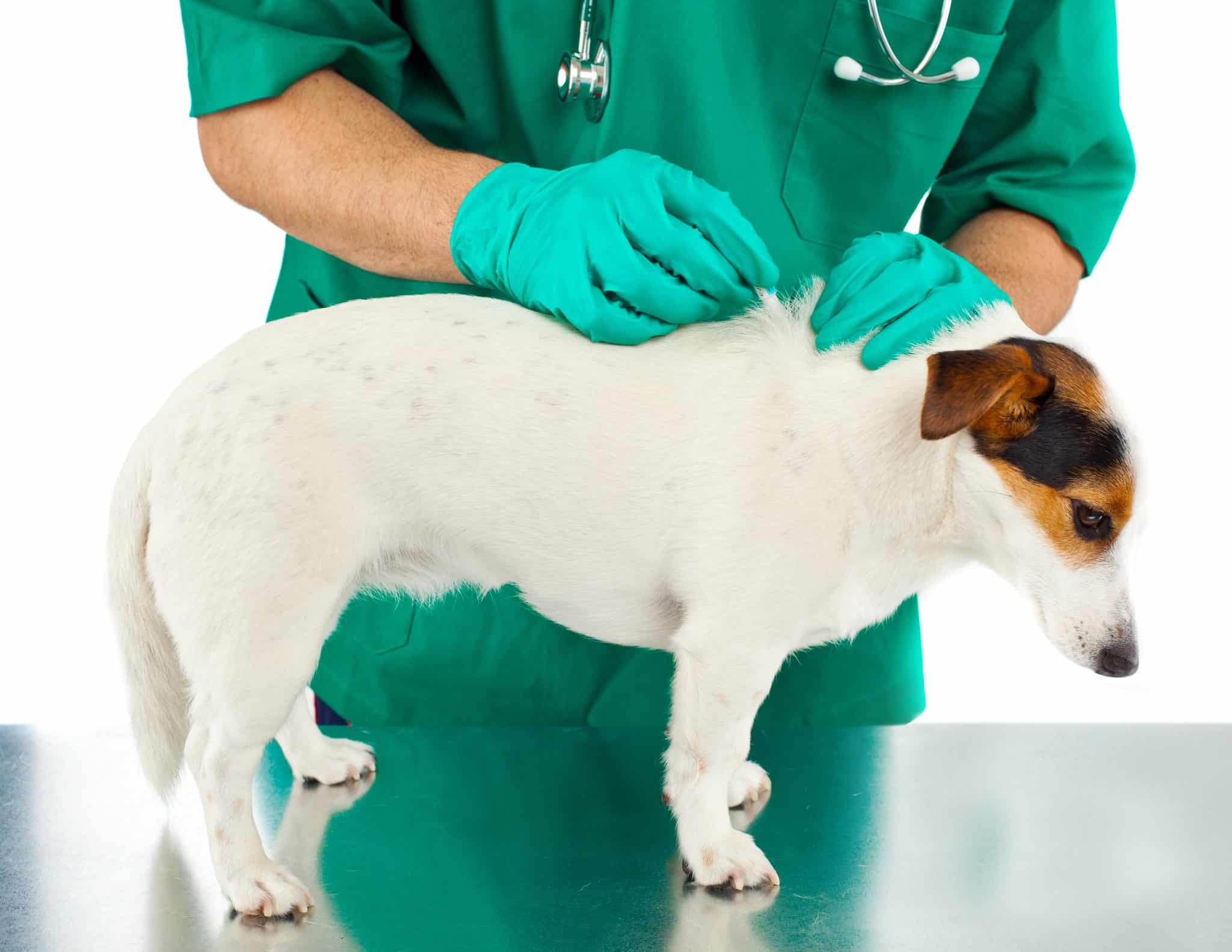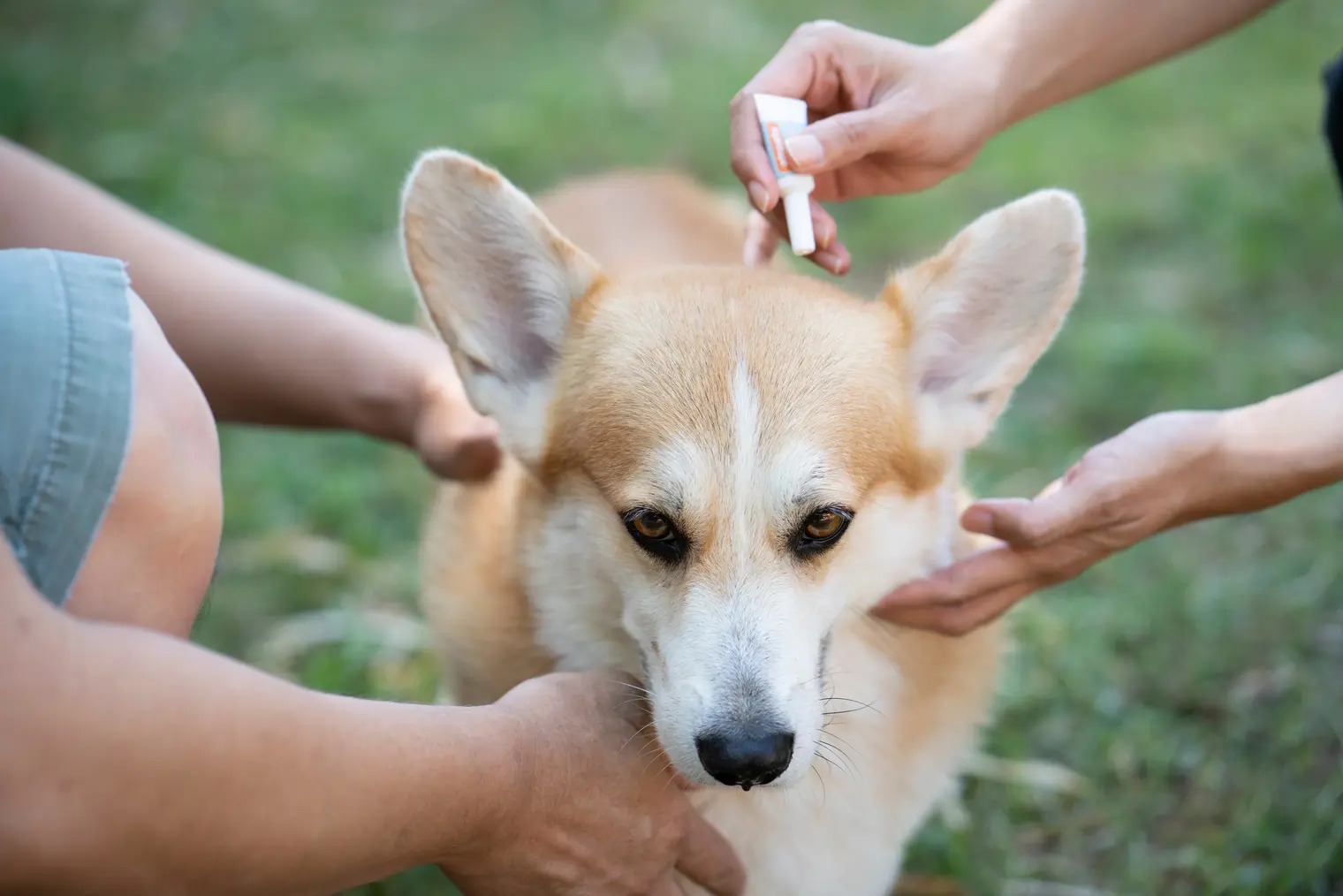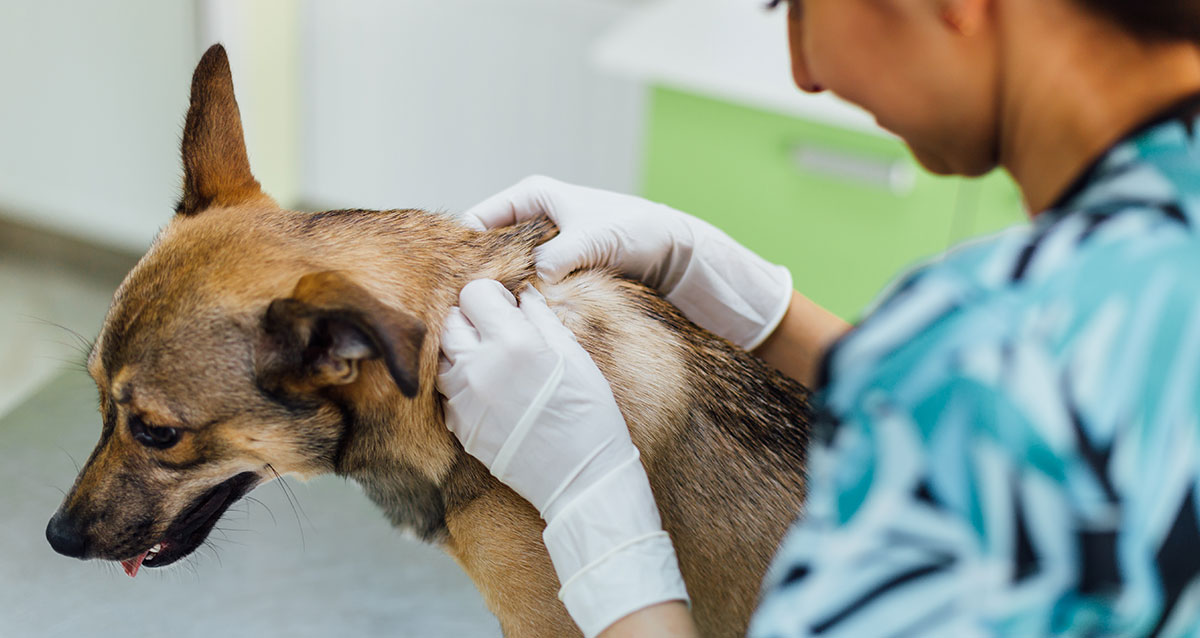Home>Health & Wellness>Common Health Issues>What Can Happen If I Use Tick And Flea Medicine For Dogs On A Cat


Common Health Issues
What Can Happen If I Use Tick And Flea Medicine For Dogs On A Cat
Modified: February 21, 2024
Learn about the common health issues that can arise if you use tick and flea medicine for dogs on a cat. Understand the potential risks and how to keep your feline friend safe.
(Many of the links in this article redirect to a specific reviewed product. Your purchase of these products through affiliate links helps to generate commission for Pawsomeoldies.com, at no extra cost. Learn more)
Table of Contents
Introduction
When it comes to protecting our furry friends from pesky parasites like ticks and fleas, pet owners often turn to specialized medications designed to combat these nuisances. However, a common misconception arises when considering the use of tick and flea medicine formulated for dogs on their feline counterparts. While the intention may be to safeguard the cat from these bothersome pests, the consequences of using dog tick and flea medicine on a cat can be severe and even life-threatening.
Understanding the fundamental differences between tick and flea medicine designed for dogs and cats is crucial in ensuring the well-being of our beloved pets. Dogs and cats have distinct physiological and metabolic characteristics, leading to variations in how their bodies process and respond to medications. This dissimilarity extends to tick and flea treatments, making it imperative for pet owners to use products specifically tailored to their pet's species.
In this article, we will delve into the potential risks and dangers associated with using dog tick and flea medicine on a cat. By exploring the symptoms of toxicity in cats resulting from exposure to these products and the available treatment options, pet owners can gain valuable insights into safeguarding their feline companions from inadvertent harm.
Understanding the differences between tick and flea medicine for dogs and cats is essential for responsible pet care. Let's explore the potential risks and dangers of using dog tick and flea medicine on a cat, along with the symptoms of toxicity and available treatment options to ensure the well-being of our feline friends.
Understanding the differences between tick and flea medicine for dogs and cats
Tick and flea medicine formulated for dogs and cats serve the common purpose of eradicating and preventing infestations of these pesky parasites. However, the key differentiating factor lies in the composition and dosage of the active ingredients, tailored to the specific physiological and metabolic characteristics of each species.
Formulation and Dosage
The formulation of tick and flea medicine for dogs often includes ingredients that are safe for canine physiology but can be toxic to felines. One such example is permethrin, a common ingredient in many dog flea and tick treatments. While dogs can efficiently metabolize permethrin, cats lack certain enzymes necessary for its breakdown, leading to its accumulation in their bodies and subsequent toxicity. Additionally, the dosage of active ingredients in dog medications is often higher than what is safe for cats, further underscoring the importance of using species-specific products.
Application Method
Another crucial distinction lies in the application method of these medications. Dog tick and flea treatments are frequently available in topical formulations, such as spot-on treatments or shampoos, which are not safe for use on cats. Cats are highly sensitive to certain chemicals, and exposure to dog-specific products can lead to adverse reactions, ranging from skin irritation to severe neurological symptoms.
Veterinary Guidance
Furthermore, the differences in tick and flea medicine for dogs and cats emphasize the necessity of seeking veterinary guidance. Veterinarians play a pivotal role in recommending safe and effective parasite control measures tailored to the unique needs of each pet. They can provide insights into the most suitable products for specific pet species and offer guidance on proper application techniques, ensuring the well-being of the pet while effectively combating tick and flea infestations.
Understanding these disparities is paramount for pet owners to make informed decisions regarding parasite control for their furry companions. By recognizing the distinct formulations, dosages, application methods, and the significance of veterinary consultation, pet owners can safeguard their pets from potential harm while effectively managing tick and flea infestations.
Potential risks and dangers of using dog tick and flea medicine on a cat
Using dog tick and flea medicine on a cat poses significant risks and potential dangers that can jeopardize the feline's health and well-being. The fundamental differences in physiological and metabolic processes between dogs and cats contribute to the severe repercussions of using dog-specific tick and flea treatments on felines.
One of the primary risks stems from the presence of toxic ingredients, such as permethrin, commonly found in dog tick and flea medications. While dogs can efficiently metabolize permethrin, cats lack the necessary enzymes to process this compound, leading to its accumulation in their bodies. This can result in severe toxicity, manifesting in symptoms such as tremors, seizures, and even life-threatening neurological issues. Additionally, pyrethroids, another class of chemicals commonly present in dog flea and tick treatments, can have adverse effects on cats, causing symptoms ranging from skin irritation to gastrointestinal disturbances and respiratory distress.
The dosage disparity between dog and cat tick and flea medications further amplifies the risks associated with inadvertent feline exposure to dog-specific products. Dog formulations often contain higher concentrations of active ingredients, exceeding the safe thresholds for cats. This heightened dosage can lead to acute toxicity, posing a grave threat to the cat's health.
Moreover, the application method of dog tick and flea treatments, typically in topical formulations, can exacerbate the dangers for cats. When applied to a cat, these products can lead to skin irritation, excessive salivation, and in severe cases, neurological symptoms. Cats are highly sensitive to certain chemicals, and exposure to dog-specific tick and flea medications can trigger allergic reactions and systemic toxicity, necessitating immediate veterinary intervention.
The potential risks and dangers of using dog tick and flea medicine on a cat underscore the critical importance of using species-specific parasite control products. Pet owners must exercise caution and diligence in selecting and applying tick and flea treatments tailored to their pet's species. By recognizing the inherent risks associated with cross-species application of these medications, pet owners can prioritize the safety and well-being of their feline companions, mitigating the potential dangers posed by dog-specific tick and flea treatments.
Symptoms of toxicity in cats from dog tick and flea medicine
Exposure of cats to dog tick and flea medicine can lead to a spectrum of toxic symptoms, necessitating prompt recognition and intervention to safeguard the feline's well-being. The manifestation of toxicity in cats resulting from inadvertent exposure to dog-specific tick and flea treatments encompasses a range of physiological and neurological symptoms, serving as crucial indicators of potential harm.
One of the hallmark signs of toxicity in cats exposed to dog tick and flea medicine is excessive salivation, often accompanied by drooling and foaming at the mouth. This overt salivation is indicative of the cat's physiological response to the toxic compounds present in dog-specific products, signaling the onset of adverse reactions requiring immediate attention.
Neurological symptoms, including tremors and muscle twitching, are prevalent manifestations of toxicity in cats exposed to dog tick and flea medicine. These involuntary muscle movements and tremors signify the impact of toxic compounds on the cat's neurological function, highlighting the severity of the feline's condition and the urgent need for veterinary assessment and intervention.
Furthermore, cats may exhibit signs of agitation, restlessness, and heightened sensitivity to stimuli, reflecting the neurological disturbances induced by toxic exposure to dog-specific tick and flea treatments. These behavioral changes serve as critical indicators of the feline's distress and the imperative need for timely veterinary evaluation to mitigate the escalating effects of toxicity.
Seizures represent a grave consequence of toxicity in cats resulting from exposure to dog tick and flea medicine. The occurrence of seizures underscores the severe neurological impact of toxic compounds on the cat's central nervous system, necessitating immediate veterinary intervention to address the feline's critical condition and mitigate the risk of further neurological damage.
Respiratory distress, characterized by labored breathing and wheezing, can also manifest in cats exposed to dog-specific tick and flea treatments. These respiratory symptoms signify the systemic impact of toxic compounds on the cat's respiratory function, emphasizing the urgency of veterinary assessment and supportive care to alleviate the feline's respiratory distress and ensure adequate oxygenation.
Gastrointestinal disturbances, such as vomiting and diarrhea, are common manifestations of toxicity in cats exposed to dog tick and flea medicine. These gastrointestinal symptoms reflect the cat's physiological response to toxic compounds, necessitating veterinary evaluation to address dehydration, electrolyte imbalances, and mitigate the feline's gastrointestinal distress.
The recognition of these symptoms of toxicity in cats resulting from exposure to dog tick and flea medicine is paramount for pet owners to promptly seek veterinary care and intervention. By vigilantly monitoring their feline companions for these critical indicators of toxic exposure, pet owners can expedite the delivery of essential veterinary treatment, mitigating the potential dangers posed by dog-specific tick and flea medications and safeguarding the well-being of their beloved pets.
Treatment options for cats exposed to dog tick and flea medicine
Upon discovering that a cat has been exposed to dog tick and flea medicine, swift and decisive action is imperative to mitigate the potential harm and safeguard the feline's well-being. The treatment options for cats exposed to dog-specific tick and flea medications encompass a comprehensive approach aimed at addressing the toxic effects and providing supportive care to facilitate the cat's recovery.
-
Immediate Veterinary Intervention: The foremost step in managing toxicity in cats exposed to dog tick and flea medicine is seeking immediate veterinary care. Prompt assessment by a veterinarian is crucial to evaluate the severity of the cat's condition, initiate appropriate treatment measures, and mitigate the escalating effects of toxic exposure.
-
Decontamination: Veterinary professionals may perform decontamination procedures to minimize further absorption of toxic compounds. This may involve bathing the cat with mild dish soap or a feline-safe cleansing solution to remove residual medication from the fur and skin, reducing the risk of continued exposure.
-
Supportive Care: Cats exposed to dog-specific tick and flea medicine may require supportive care to address the diverse manifestations of toxicity. This can include intravenous fluid therapy to maintain hydration, stabilize electrolyte imbalances, and support renal function, thereby aiding in the elimination of toxic compounds from the cat's system.
-
Symptomatic Treatment: Veterinary intervention may encompass symptomatic treatment to alleviate specific manifestations of toxicity, such as administering medications to control seizures, manage respiratory distress, and address gastrointestinal disturbances. These targeted interventions aim to mitigate the adverse effects of toxic exposure and enhance the cat's physiological stability.
-
Monitoring and Observation: Close monitoring and observation of the cat's vital signs, neurological status, and overall condition are essential throughout the treatment process. This vigilant oversight enables veterinary professionals to promptly identify any deterioration or emerging complications, facilitating timely intervention and adjustment of the treatment plan.
-
Continued Care and Follow-Up: Following the initial treatment, continued care and follow-up assessments are vital to monitor the cat's recovery progress and address any lingering effects of toxic exposure. Veterinary guidance and supportive measures play a pivotal role in ensuring the cat's complete recuperation and minimizing the long-term impact of toxic exposure.
By promptly initiating these treatment options and collaborating closely with veterinary professionals, pet owners can optimize the prospects of a favorable outcome for their feline companions. The comprehensive approach to treatment underscores the critical importance of addressing toxic exposure to dog tick and flea medicine in cats, prioritizing their well-being and ensuring their swift recovery from the potential dangers posed by inadvertent exposure to dog-specific parasite control products.
Conclusion
In conclusion, the inadvertent use of dog tick and flea medicine on a cat can lead to severe and potentially life-threatening consequences. The fundamental differences in physiological and metabolic processes between dogs and cats underscore the critical importance of using species-specific parasite control products. The presence of toxic ingredients, such as permethrin, and the dosage disparity between dog and cat tick and flea medications highlight the inherent risks associated with cross-species application of these treatments.
Recognizing the symptoms of toxicity in cats resulting from exposure to dog-specific tick and flea medications is paramount for pet owners to promptly seek veterinary care and intervention. The manifestation of excessive salivation, neurological symptoms, behavioral changes, seizures, respiratory distress, and gastrointestinal disturbances serves as crucial indicators of potential harm, necessitating immediate veterinary assessment and treatment.
Furthermore, the treatment options for cats exposed to dog tick and flea medicine encompass a comprehensive approach aimed at addressing the toxic effects and providing supportive care to facilitate the cat's recovery. Swift veterinary intervention, decontamination procedures, supportive care, symptomatic treatment, close monitoring, and continued follow-up assessments are vital components of the treatment process, emphasizing the imperative need for collaborative efforts between pet owners and veterinary professionals to optimize the prospects of a favorable outcome for the affected feline.
Ultimately, responsible pet care entails a thorough understanding of the differences between tick and flea medicine for dogs and cats, as well as the potential risks and dangers associated with using dog-specific products on felines. By prioritizing the safety and well-being of their beloved pets and exercising caution in selecting and applying parasite control products, pet owners can mitigate the potential dangers posed by inadvertent exposure to dog tick and flea medicine, ensuring the optimal health and vitality of their feline companions.














